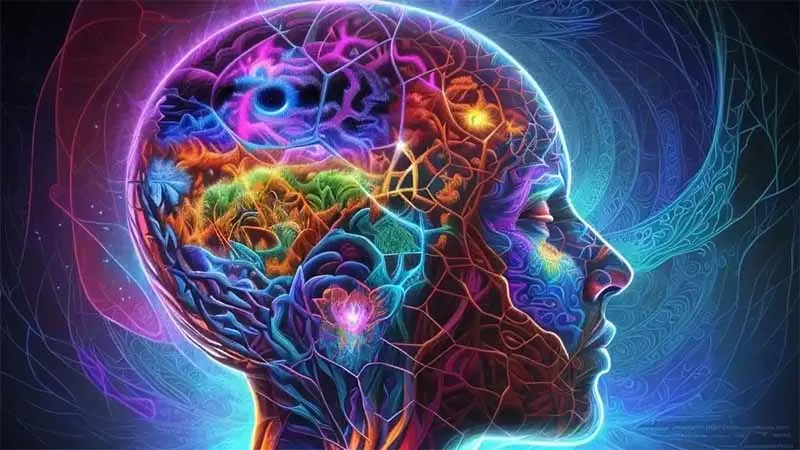It is currently trendy to be enthusiastic about “holistic” medicine. However, a single “unfortunate” substance is increasingly being blamed for all of human problems. Although nothing in the body works in isolation, all by itself.
The body is a living and constantly changing system. There are no stable and lasting connections “for life”.
There is a process of adaptation to the needs of the present moment, in which even huge molecules of enzyme proteins, under the influence of an impulse unknown to science, can instantly change so much that they become unrecognizable (scientists have recorded such changes visually, but they are not yet able to understand their cause).
In other words, where there was just a large factory producing matches, but the news has come that matches are no longer needed. At this moment, this factory immediately turns into the production of cream.
The professors scratch their heads and admit that we will never unlock all the secrets, let alone learn to control them.
Therefore, all one needs to know about the human body is that it has the ability to respond to the conditions of this present moment.
Actors have the concept of “proposed circumstances.” Here biochemistry ensures that life proceeds in the conditions that you have suggested to yourself.
What you end up with – health or disorders – depends on how critical or optimal the conditions in which you have placed your body are.
Both are an adjustment.
If you do not like your adaptation, you should not pursue the molecules in the analyzes, but change the living conditions of your body, blocking the influx of various types of “garbage” coming into it and removing what has already entered.
Cortisol – the master of fine adjustment
One of the biochemical “personae non gratae” is currently undeservedly cortisol – one of the fundamental substances of the body, without which life is impossible.
Cortisol is often called the stress hormone, but it is more accurate to say that it is an action hormone, an intermediary between stress – the excitement of the situation changing – and the body needing to prepare for these changes.
Depending on how significant the changes are, cortisol prepares the body.
And it does this with virtuoso precision, it literally calibrates the functioning of the organism.
Thus, one action requires very few resources, while another requires maximum preparation: redistribution of blood flow, preparation for injury, increasing energy production and activating cardiac function, reducing the inflammatory response, improving brain function, etc.
When activity is not required, cortisol production is reduced. Instead, our bodies produce hormones that help us relax, eat, rest and reproduce.
The essence here is the flexibility of hormone regulation, not the amount of hormones at any given time.
Problems arise when people rely on cortisol too often.
When someone is constantly running somewhere, fighting something and fighting against life.
Frequent stress leads to hormonal imbalance.So, if such “proposed circumstances” persist, readaptation occurs – an excess of cortisol in relation to all parameters: persistent increase in blood pressure and blood sugar, imbalance in the immune system, increased anxiety, breakdown of proteins, etc .
It is even worse when the body has prepared cortisol, but the person does not use any of it. It turns out that she only thought but did not act!
This ultimately results in a moment in which the adaptation fails – the body abruptly reduces cortisol production.
Therefore, one should not avoid gambling with the endocrine system.
You should forget about cortisol and not think about it at all. This is the job of the pituitary gland, not the cerebral cortex.
One should not be afraid of high or low cortisol, but of how often your “proposed circumstances” and lifestyle require its production.
It is important to remember that long-term cortisol adaptation will lead to failure, not happiness, in the long run.
And one should think about what needs to be done to direct the process towards health and bring the endocrine system to an optimal state of balance. One of the options is an individual retreat with Ayahuasca.
Cortisol and severe depression
According to the latest findings, it is assumed men that cortisol is critically involved in the mechanism of depression.
Scientists note that depression can cause both increased and decreased cortisol levels. And its very low level is being observed more and more often.
Such differences can be explained by various factors, including depression subtypes, depression severity, gender, disease duration, and even the individual’s socioeconomic status.
But that doesn’t change the fact that it’s not cortisol that’s to blame, but the life of the person with depression: something went wrong in it, and the biochemistry is prone to mood disorder.
And balancing this with pharmacology is very problematic – depression is increasingly resistant to medication.
Scientists with special flexibility of thinking understand that drugs somewhere halfway affect the essence of depression, but sometimes confuse more than help.
The actual “jamming” – the event or situation that triggered the development of depression remains unchanged.
That is why scientists are increasingly looking to Ayahuasca – the “healer” who understands everything unimaginable and complicated both inside and outside the human body.
And we study and report research with Ayahuasca to help ensure that nothing requires affirmation after encountering “Madre.”
Ayahuasca eliminates the need for depression.
Here is an interesting study: “Modulation of cortisol levels in patients with treatment-resistant depression and healthy subjects in a control group with ayahuasca“.
Here a group was put together that was already in a depressive state – baseline cortisol levels were low, and medication didn’t help. And a control group without depression.
The depressed group consisted of people who had suffered from low mood for 2 to 20 years and had previously taken, on average, 3-4 different antidepressants without success.
Then everyone was divided so that no one, including the researchers, knew who was taking what: ayahuasca or a colored placebo drink.
This is a double-blind study, the most rigorous standard in the scientific world.
Compared to the placebo group, researchers found a greater increase in cortisol in everyone who took ayahuasca.
There was an appropriate increase in cortisol levels in the “depressed” people 1.4 hours after taking ayahuasca – it became just as high as in healthy people.
After 48 hours after the ayahuasca session, the cortisol levels in the “depressed” people when they woke up were also comparable to those in healthy people.
There were no such changes among people with depression in the placebo group.
Of course, ayahuasca does not directly affect cortisol. It doesn’t care at all.
Ayahuasca removes from the depressive state, eliminates the very “substrate” of depression and shows a different way of life.
The body (which is not stupid) immediately adjusts the work of the hormonal axes, which the person experiences as relief and the end of the depressive state.
But if you still need confirmation about the speed of ayahuasca’s effects, you can check out this study, which found an 87% reduction in depression severity just 24 hours after taking ayahuasca once.
Maybe you love reading, but we suggest taking action.
Come join us for a retreat at Home of Ayahuasca if you want to get rid of your depression
Read more about scientific research on Ayahuasca in our blog section: Science
Ayahuasca guidelines and safety
Are nerve cells able to regenerate? Opinion of scientists and shamans practicing Ayahuasca







